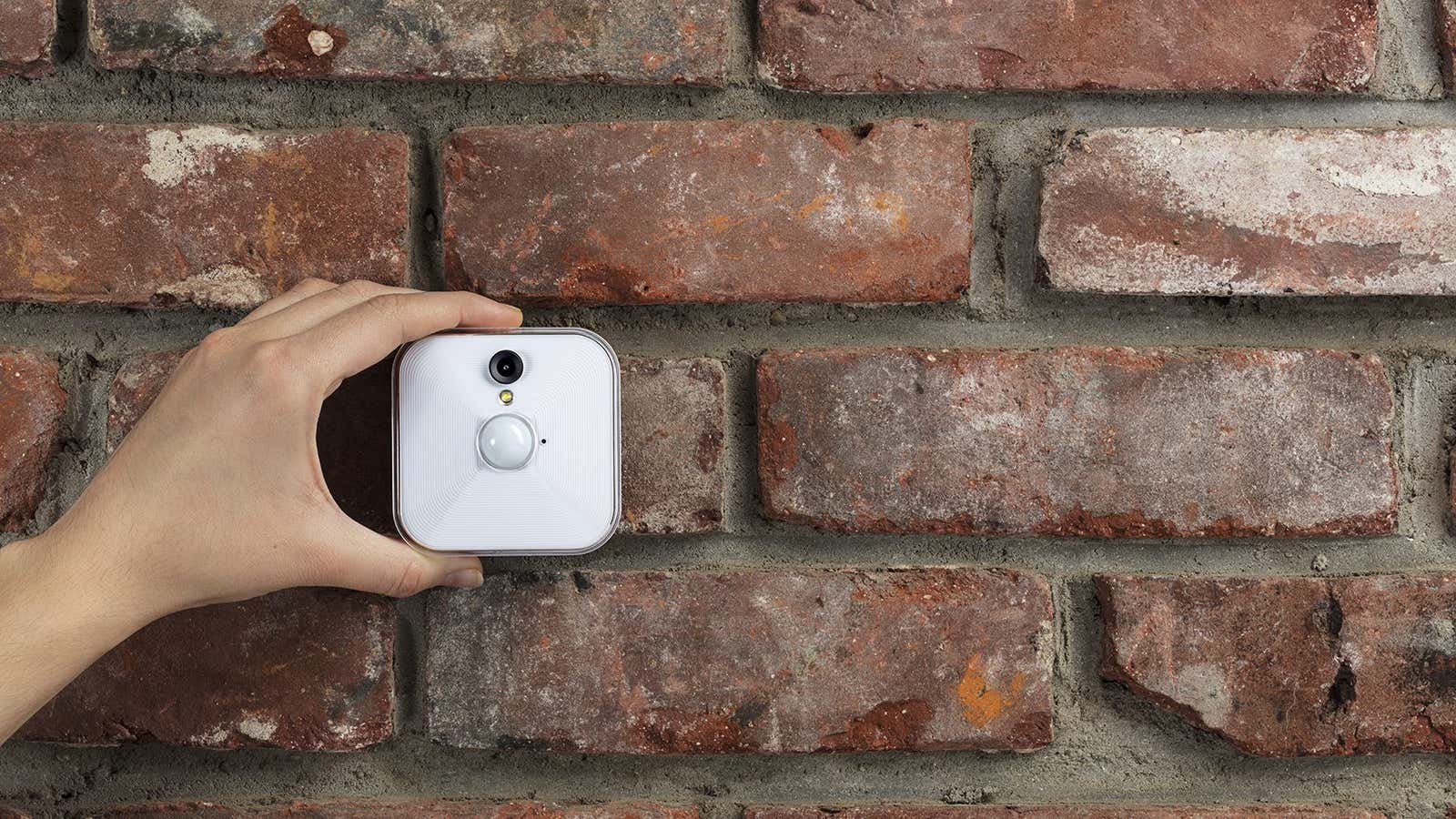Just in time for the holidays, Amazon has acquired Blink, a venture-capital backed startup that makes home security cameras. The deal likely brings Amazon closer to its latest delivery ambition, of placing stuff from its warehouses directly inside your home.
Blink, which launched in early 2016, advertises its products as “ultra-affordable, truly wire-free” home security cameras. Its devices run on AA lithium batteries and are designed to go anywhere from outside a home to the kitchen counter. The Blink system starts at $99 a year, the same price as an Amazon Prime account. Blink had raised nearly $30 million in funding, most recently $3 million in convertible debt this past February, according to VC-research firm PitchBook.
Blink announced the acquisition on its blog and didn’t disclose the deal price. “As one of their distributors, we already know customers love their home security cameras and monitoring systems,” Amazon said in an emailed statement. “We’re excited to welcome their team and invent together on behalf of customers.” Amazon declined to share details of its plans for Blink.
Amazon is already a leader in both online shopping and physical logistics, but it is increasingly trying to meld the online and offline worlds. It’s doing this with Alexa, its voice-enabled personal assistant; Amazon Go, a largely automated convenience store; and Amazon Lockers, which the company is installing in apartment buildings and stores to help people receive and return Amazon.com purchases. Blink, which integrated with Alexa in October 2016, is another technology Amazon can add to that arsenal.
Home delivery has in recent years become commoditized, so that we now set our expectations in hours rather than days. The most ambitious retailers are also experimenting with technologies that let them deliver not just to a doorstep, but inside a home. Blink’s technology is a natural fit for these ambitions.
Amazon has reportedly been in talks with Phrame, a maker of smart license plates, that would let it leave packages inside a car trunk. It has also reportedly worked on a smart doorbell that would give delivery drivers one-time access to a customer’s home, which would theoretically reduce lost and stolen packages. (Blink just so happened to announce a video-enabled doorbell earlier this week.) In October, Amazon introduced Amazon Key, a program for Prime members that starts at $250 to give home access to authorized delivery workers. Preliminary reviews are mixed.
Walmart, meanwhile, is testing a system that would sync up with home security cameras to let delivery workers leave groceries in your home fridge.
As with any new technology, the key question is whether people will accept it. Blink has obviously tried to brand its wireless security cameras as friendly and comforting, rather than another intrusion into our private lives. The company’s informational video, for example, shows a man smiling in a coffee shop as he watches his Amazon package being delivered at home, and a man grinning as he pulls out his phone to watch two small children (presumably his) playing with blocks on a carpet.
